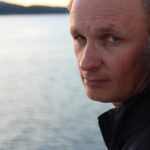
Leading a group from his home base at the Stockholm Resilience Center, Johan Rockström is an internationally recognized scientist because of his work on global sustainability issues. He helped lead the team of scientists that presented the planetary boundaries framework, first published in 2009, with an update in 2015. The nine planetary boundaries presented in the framework are argued to be fundamental in maintaining a “safe operating space for humanity”; levels below the boundaries are safe, while exceeding the boundary puts our operating within the earth system into degrees of increasing risk. This framework has been embraced as an approach to sustainable development, and has been used to help guide governments, international organizations, NGOs, and companies considering sustainable development. (Note that Martha Rawson’s notion of “doughnut economics”, for example, is an elaboration of the planetary boundary concept, adding a lower boundary limit for our societies’ human-made systems of economics operating beneath that of the upper limits of the earth system. While the planetary boundary defines what is “safe”, ecologically speaking, the lower societal boundary defines what is “just”, ethically speaking.)
One of the co-authors of this work has been Will Steffen who has helped define the concepts of the Anthropocene and “the Great Acceleration” (talked about elsewhere on this website, on the webpage “Time of a Great Transformation?“).
Nine planetary boundaries
1. Climate change*
2. Change in biosphere integrity (biodiversity loss and species extinction)*
3. Stratospheric ozone depletion
4. Ocean acidification
5. Biogeochemical flows (phosphorus and nitrogen cycles)*
6. Land-system change (for example deforestation)*
7. Freshwater use
8. Atmospheric aerosol loading (microscopic particles in the atmosphere that affect climate and living organisms) [not yet quantified]
9. Introduction of novel entities (e.g. organic pollutants, radioactive materials, nanomaterials, and micro-plastics) [not yet quantified]
*indicates the safe boundary has been exceeded
Learn More:
Johan Rockström’s TED Talk: Let the environment guide our development

